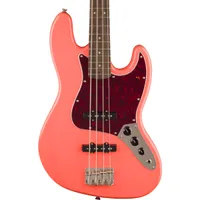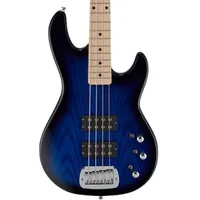Best bass guitars 2025: Low-end tones for any budget
Whether you're tracking at the home studio or regularly gigging, my top bass guitars will deliver tone, feel, and flexibility
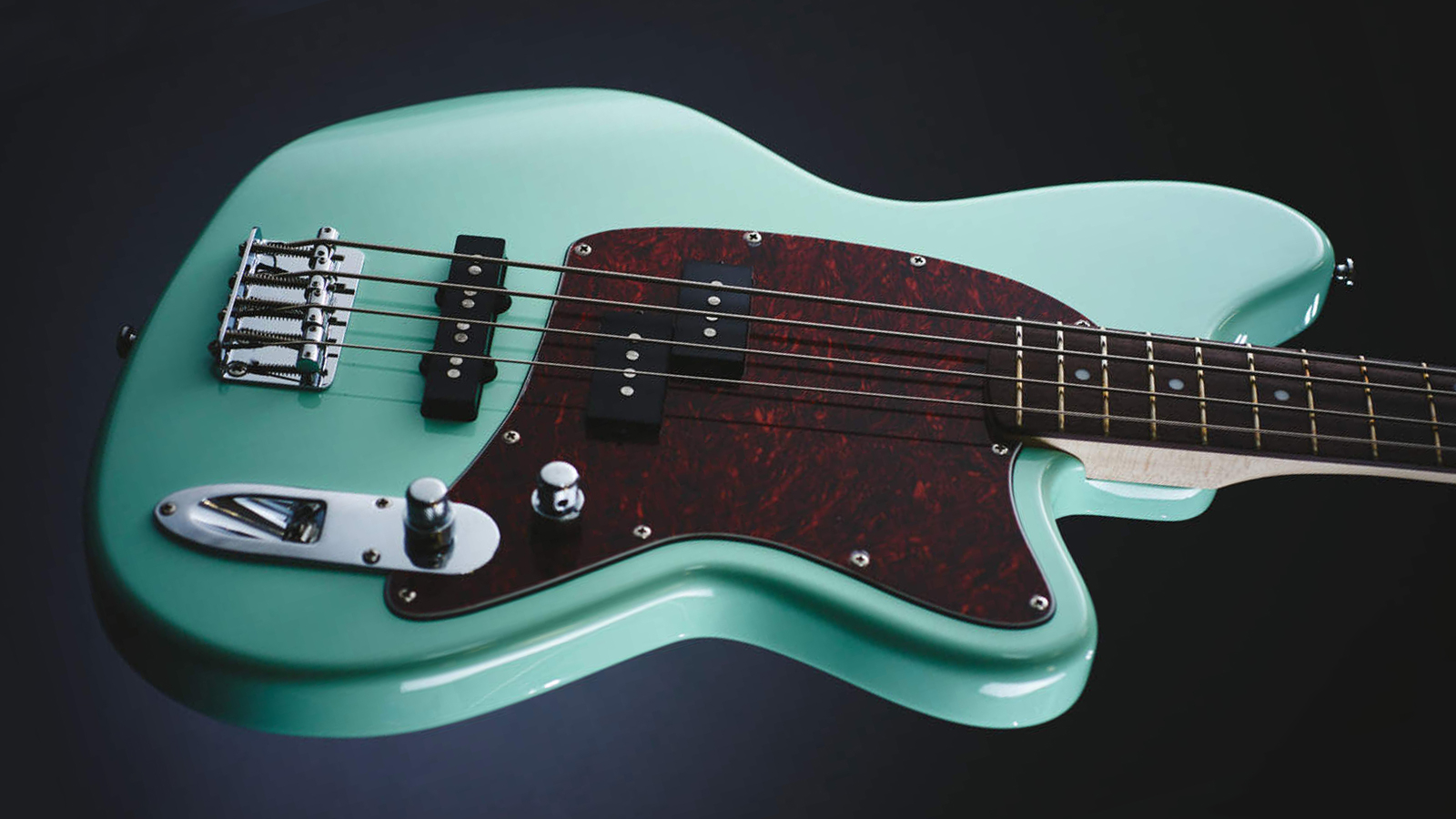
I've been playing bass guitar for over 20 years, and I've been lucky enough to have played some of the best bass guitars ever made… as well as some that fell well below the mark. As with any instrument, what makes it great can be subjective, but I believe some things are non-negotiable when it comes to picking out a brilliant bass guitar.
When I’m looking for a new bass guitar, playability comes above everything else. How happy am I to sit and play this instrument for a prolonged period? How easy is it for me to navigate the fretboard? Without playability, everything else falls apart. Next, is the tone the bass produces right for my sound? As somebody who plays multiple styles, I am interested in versatility in a bass guitar, meaning it’s as happy playing clean, smooth tones, as it is when drenched in fuzz.
Of course, there are many reasons you might want to buy a bass guitar, so to make things easier I've broken this guide down into sections. I have options for beginners, studio musicians wanting to record, those looking for a short scale option for comfort, and those who want a specific rock or metal bass guitar.
For me, the Fender Vintera II 50s P-Bass combines all of the above into one instrument. There's a reason a design from the '50s continues to be popular today, and this Vintera version is superb value for money. If you're buying your first bass guitar, go check out the Sire Marcus Miller V3P 4-String, which delivers excellent playability with some top-tier features at a brilliant price point.
To help you make your buying decision, I've packed this guide with extra sections that should give you everything you need to ensure you buy the right bass guitar for you. I've put together a how to choose section to guide you through the buying process, an FAQs section that answers loads of common questions you might have, and a glossary of key terms to help you decode the bass-specific lingo used in this guide.
Save big on guitar gear and stock up on essentials for less with our handpicked Black Friday guitar deals highlights.
My top picks
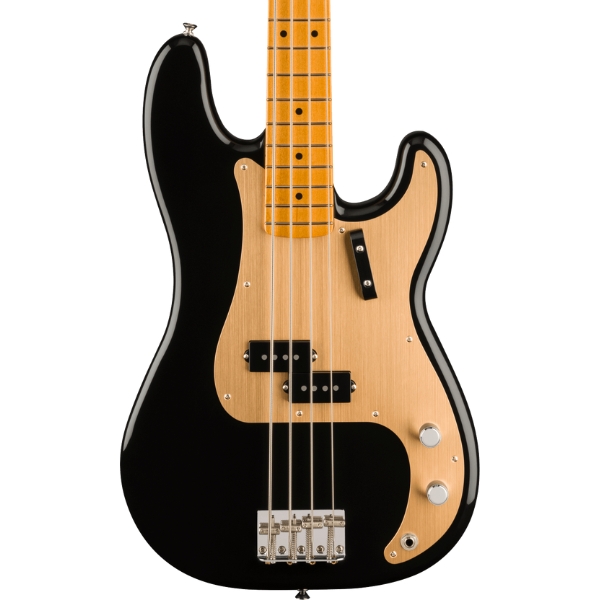
Combining superb build quality with playability, and all at a reasonable price point, the Fender Vintera II 50s P-Bass will suit the vast majority of bass players out there. Despite being over 70 years old, the P-bass design continues to be amongst the best ever.
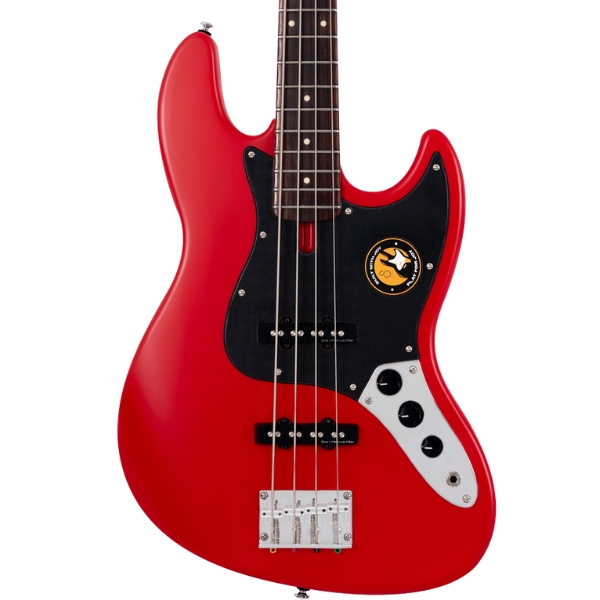
For me, the Sire Marcus Miller V3P is the ultimate beginner bass guitar because the neck is so playable. Despite being aimed at beginners, there are a lot of 'pro' level features here, making it superb value for money, too.
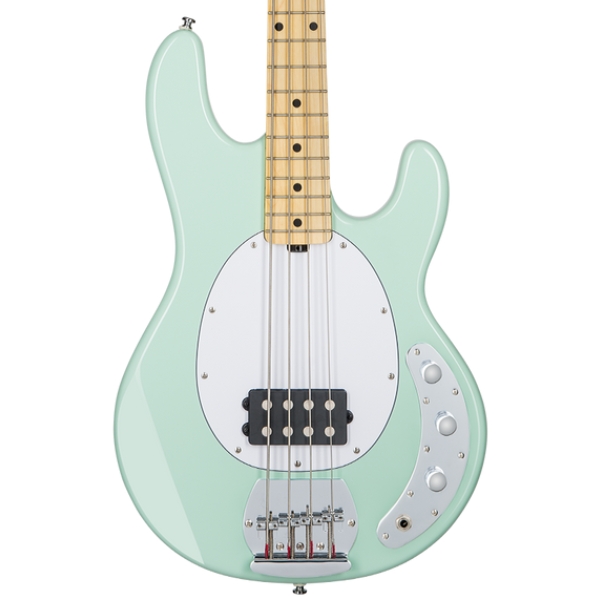
If you don't want to spend too much on a bass guitar, perhaps you just need one for a home studio or backup for gigging, the Sterling by Music Man SUB Ray 4 is an excellent choice. Powerful pickups and a playable neck make it superb value for money.
Best overall
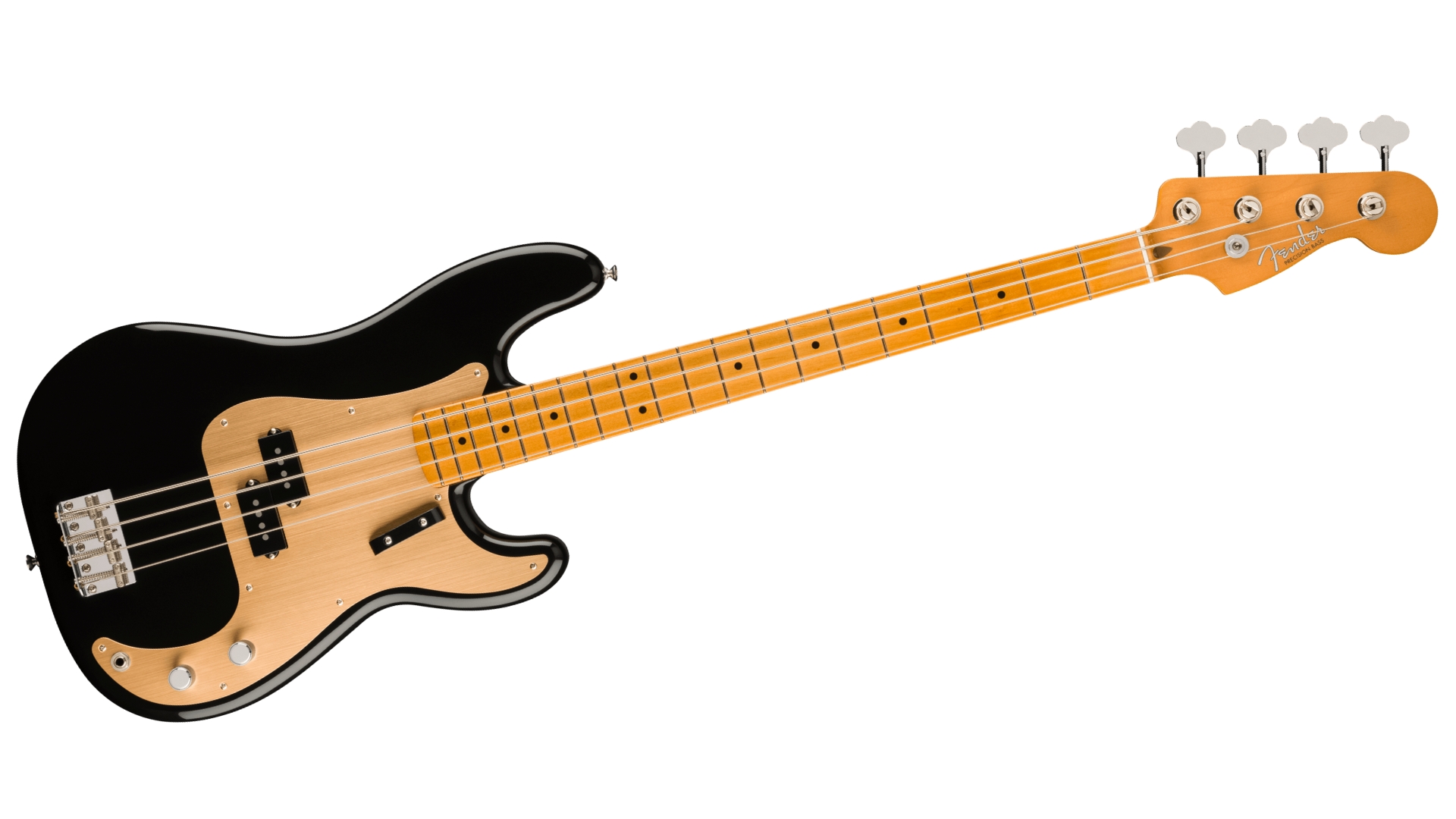
1. Fender Vintera II 50s Precision bass
Our expert review:
Specifications
Reasons to buy
Reasons to avoid
✅ Buy if you’re looking for the quintessential bass guitar: With vintage styling and appointments plus classic bass tones, it’s a throwback in the best way possible.
❌ Avoid if American-made is a necessity: The Vintera II range is brilliant, but some will always want to go US-made over Mexican.
The P-Bass was the first ever commercially successful bass guitar. Debuting in 1951, it says something about their versatility and brilliant sound that they’re still in huge demand today. This Fender Vintera II 50s Precision Bass aims to capture the vibe of the original with modern build quality and components.
The sound of this P-Bass is exactly what you’d expect. Deep, warm, with a strong midrange presence that lets it cut through any mix beautifully. It’s a simple pickup configuration with one volume and tone control, yet the tone knob is surprisingly wide-ranging.
The subtle touches on this bass complement the retro looks, like the anodized scratchplate and finger rest, all helping the vintage vibe. Rock solid Fender hardware delivers stability and durability. It’s a simple instrument, but one that’s deceptively versatile.
Best for beginners
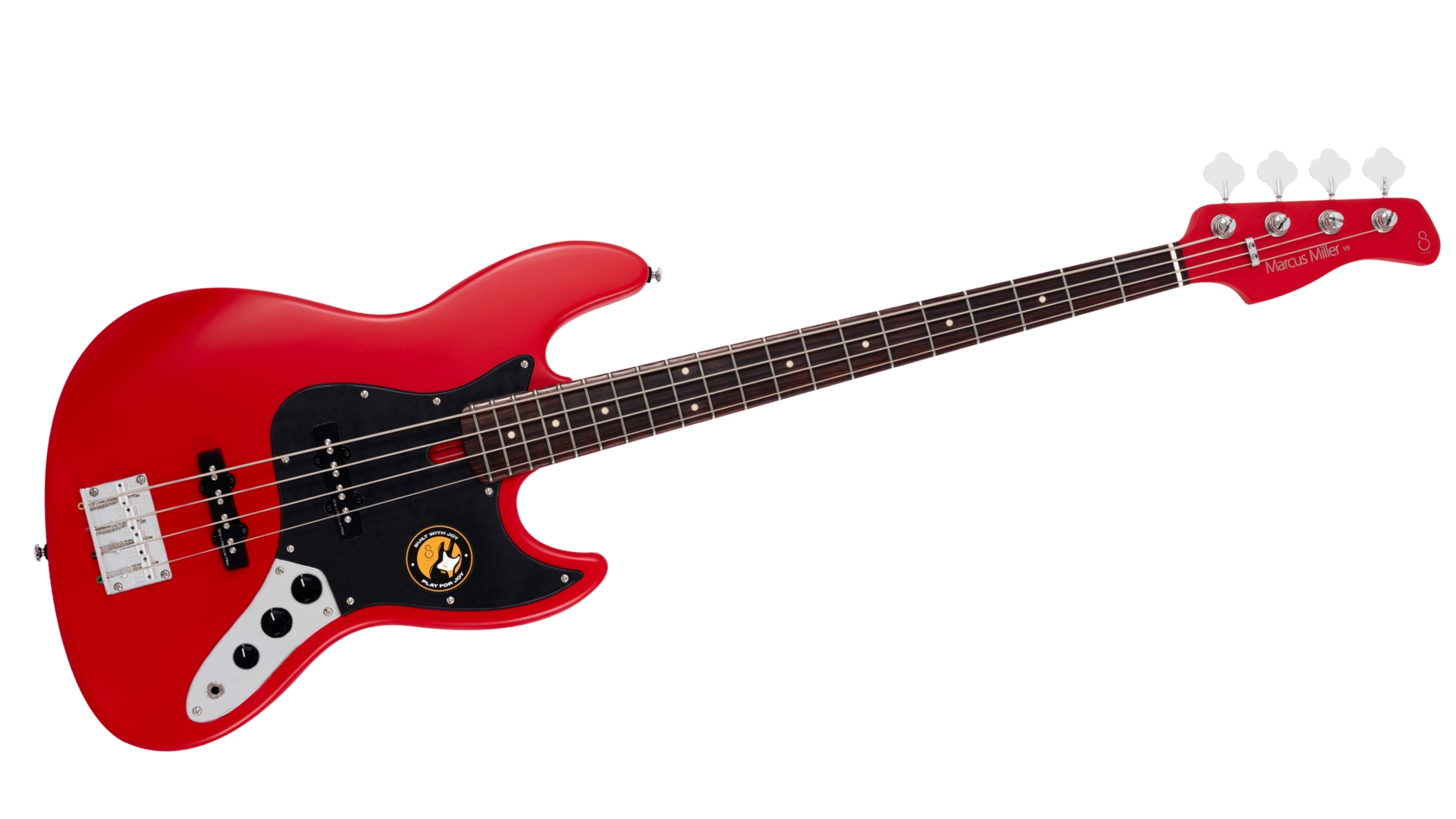
2. Sire Marcus Miller V3P 4-String
Our expert review:
Specifications
Reasons to buy
Reasons to avoid
✅ Buy if: You are looking for a super-solid bass guitar: With some pro-level features, this bass has everything the beginner bassist needs.
❌ Avoid if You are a left-handed player: Unfortunately, there's no lefty option for this model, but Sire does do other basses with left-handed options.
The V3P is the J-bass-inspired, entry-point into Sire’s range of bass guitars. With the Marcus Miller name attached, there is some serious prestige associated with the brand, despite the price point suggesting otherwise. Coming in both 4-string and 5-string variants – the 5-string comes in a little more expensive than the 4-string – we think this is the perfect beginner bass whether you are entirely new to the instrument, or trying out 5-strings for the first time.
The Sire V3P stands above its competitors with very un-budget-like features, including ‘Edgeless’ Rosewood fingerboard – essentially, rolled edges – a feature you simply do not see on basses at this price point. This is, in part, due to Sire owning the factory they produce their basses in, rather than outsourcing, ensuring quality control is maintained.
Given the quality of the rest of the bass, it’s no surprise that the tonewoods used throughout are to a much higher quality than you might expect too, and the J Revolution Pickups offer good versatility across multiple genres, with great attack, plenty of fat low end, and strong resonance.
There’s not a lot to dislike about the V3P – though personally I’ve always found the Sire headstock to look a little ugly and cheap – and we’d definitely suggest it as a live bass for anybody looking for a solid workhorse, even if the satin finishes (black and red) are likely to damage pretty easily. The lack of a left-handed model with an entry-level bass feels like one of very few oversights by Sire.
Best budget
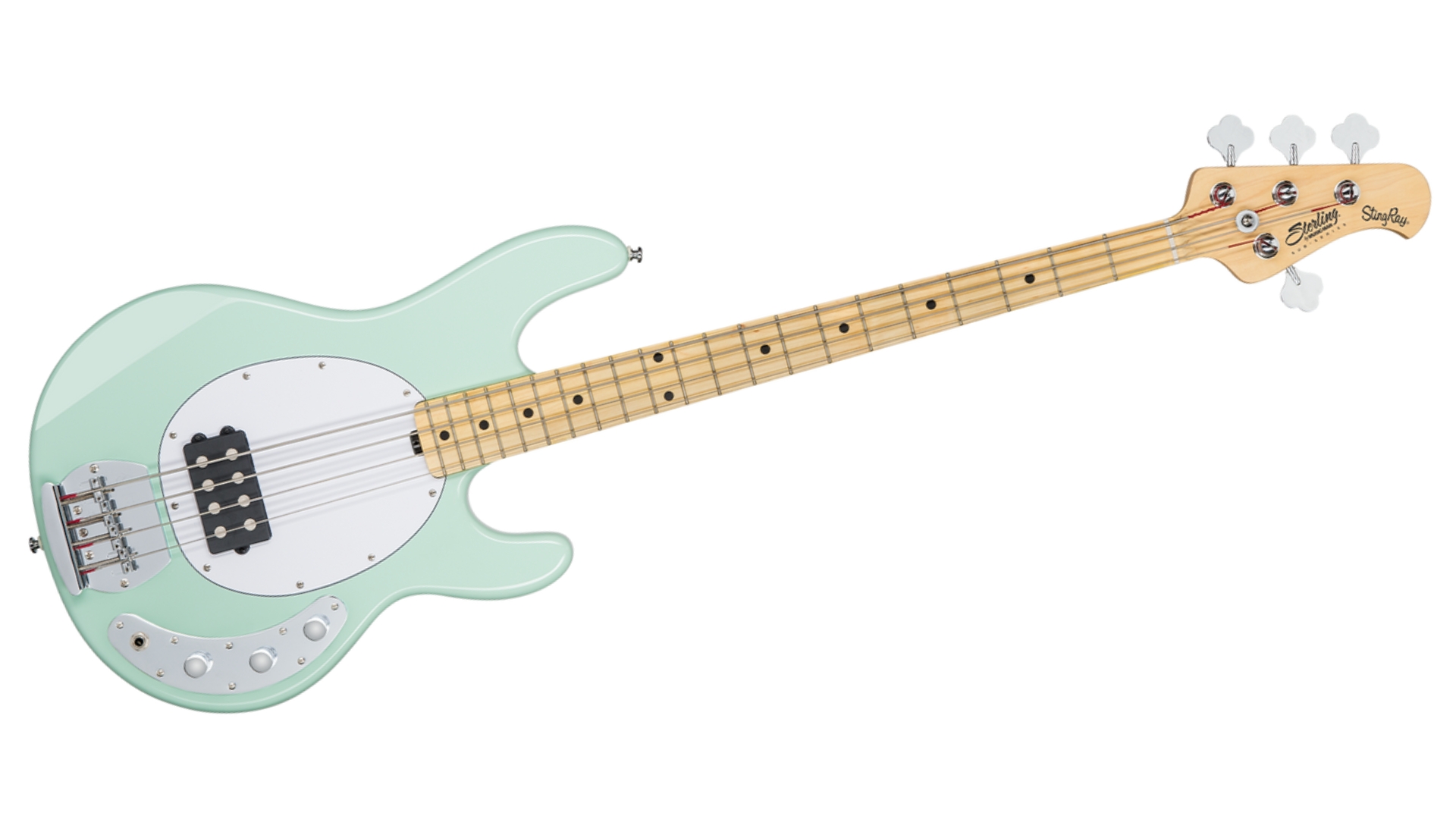
3. Sterling By Music Man SUB Ray 4
Our expert review:
Specifications
Reasons to buy
Reasons to avoid
✅ Buy if you need a cheap bass: Despite costing relatively little, this is a brilliant bass guitar for the money with great tone and excellent playability.
❌ Avoid if you want multiple pickups to blend tones: The H-1 humbucker is powerful and versatile, but a second pickup would add to that versatility.
Favored by everyone from Bernard Edwards of Chic to Tim Commerford of Rage, the full-fat Music Man StingRay bass is financially out of reach for most bassists. So, it’s a pleasant surprise to find the Sterling by Music Man StingRay4 get so close to the look and sound of its much more expensive sibling.
That sound is driving with plenty of energy and clarity in equal measure. The active electronics deliver excellent output that melds well with a lot of styles, and you’ve got lots of tone sculpting options with the onboard EQ.
Deep cutaways on the body give you great upper fret access and it's quite lightweight for a bass guitar, so you won’t be cursing during those long rehearsals. The neck is lovely and smooth to play on too, it’ll make you want to keep coming back again and again. At this price point, you’ll be hard pushed to find something better.
Best for studio
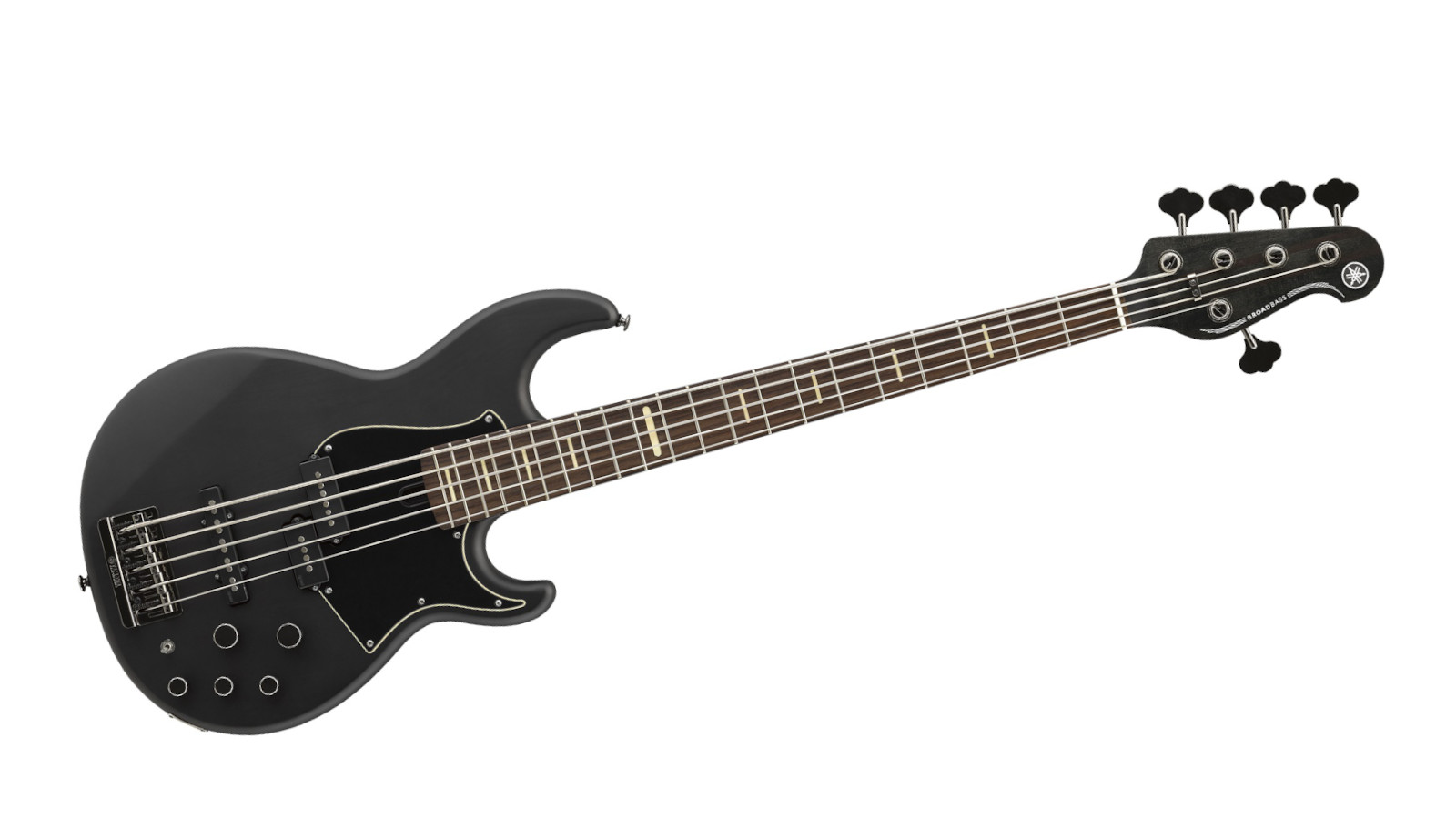
4. Yamaha BB735A
Our expert review:
Specifications
Reasons to buy
Reasons to avoid
✅ Buy if you are looking for versatility: With 5-strings and bags of on-board tonal control, this is a great bass for studio work.
❌ Avoid if you’re a beginner: With active/passive switching and EQ, this bass has a lot of features that will be confusing for beginner players.
The Yamaha BB735 offers the professional quality and reliability required to take a bass out on the road. With some unique build features and great electronics, this is a versatile bass guitar that will serve you well in almost any scenario.
The pickup configuration is supremely adaptable, delivering a tone that is full-bodied and smooth. The 3-band EQ lets you dial in plenty of different bass sounds from vintage to modern, responding well to small tweaks to help you easily cut through any mix on stage.
The build quality is simply outstanding, as you’d expect from any Yamaha instrument. The neck features six bolts, with two countersunk and angled at 45 degrees to help enhance the stability. This gives you a super stable platform that you can rely on to put up with the most aggressive playing.
Best for rock and metal
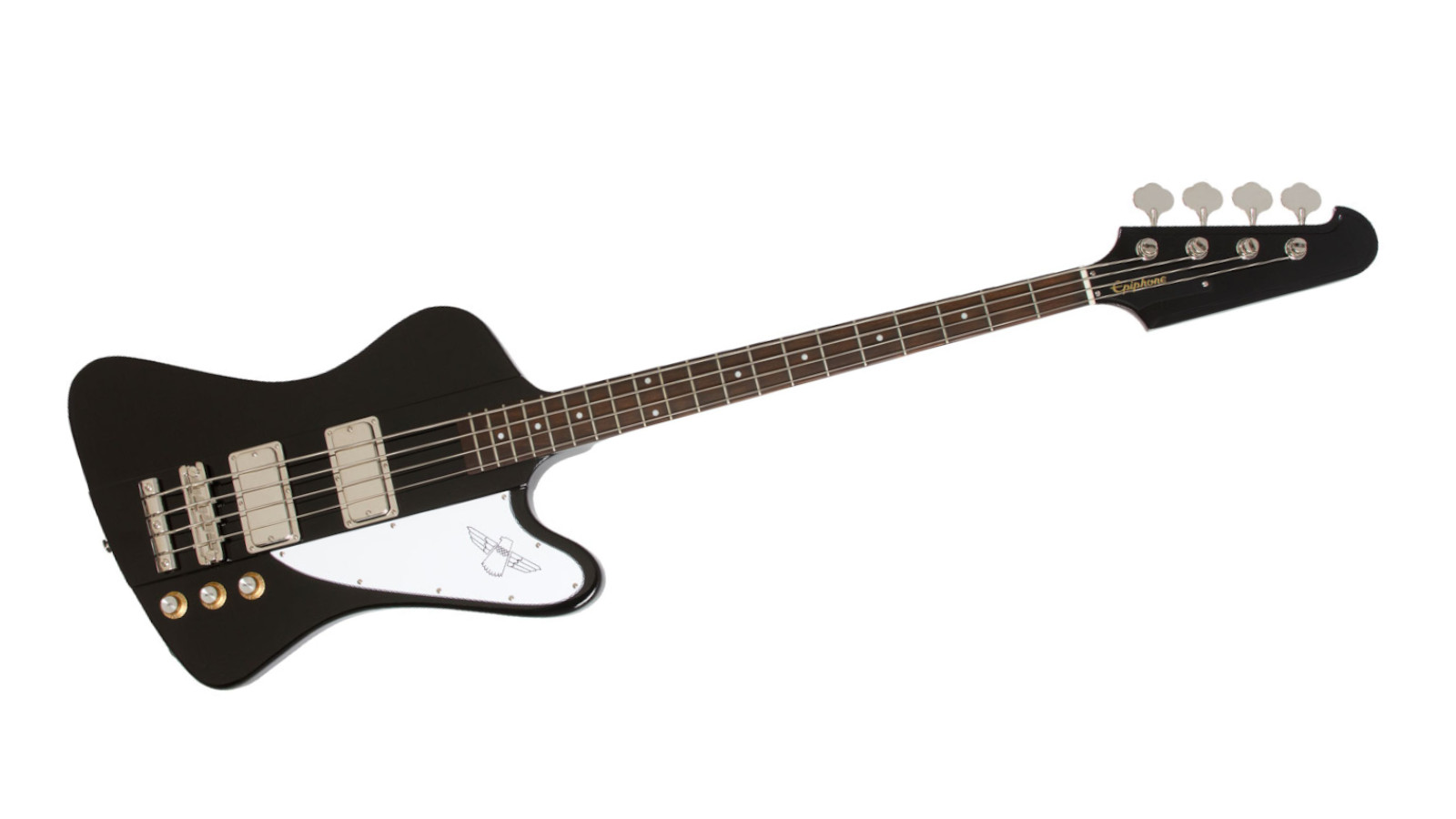
5. Epiphone Thunderbird 60s Bass
Our expert review:
Specifications
Reasons to buy
Reasons to avoid
✅ Buy if: You’re a rock/metal bassist: With its iconic looks and excellent range of aggressive tones, this is the perfect bass for the heavier stuff.
❌ Avoid if you want a conventional bass shape: The Thunderbird is iconic, but not to everybody’s taste, and could be uncomfortable for some players.
Look no further than the Epiphone Thunderbird 60s Bass if you want to turn some heads at your next show. As well as its absolutely gobsmacking good looks, it’s also got a raunchy tone that’s perfect for rock and metal.
Dual ProBucker #760 humbuckers deliver a fat-sounding growl that sustains for days. You can blend the volumes of each pickup together, so whether you need a warm, round sound or a more cutting treble tone there’s plenty in reach here.
It’s a neck-through design so you get great upper fret access and the rounded 60s profile feels really fat in your hand, yet it’s surprisingly comfortable to play. The rock solid hardware is durable enough to put up with plenty of abuse on the road, and with these looks you definitely won’t want to keep it at home.
Best short-scale
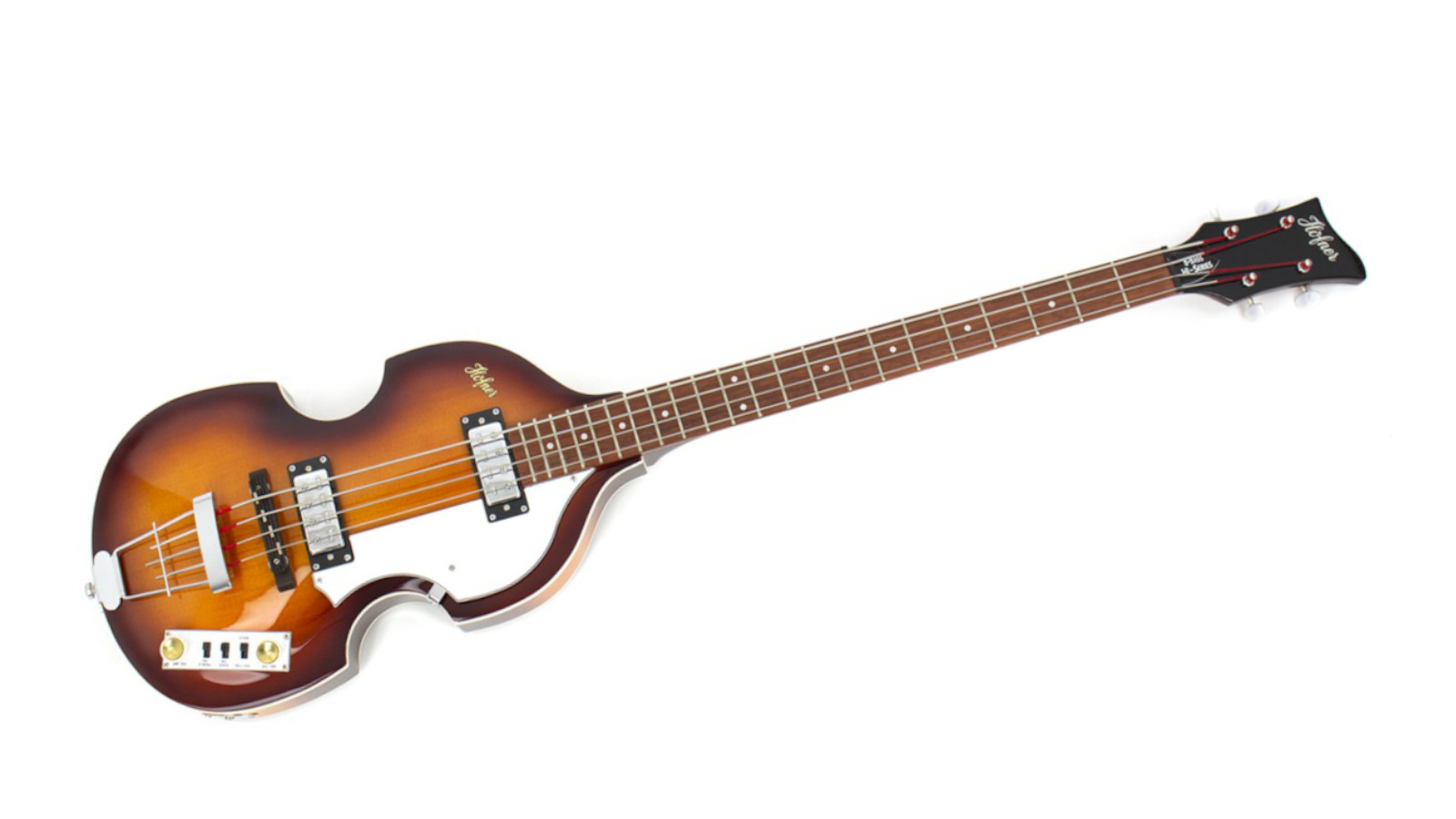
6. Hofner Ignition SE Violin Bass
Our expert review:
Specifications
Reasons to buy
Reasons to avoid
✅ Buy if you want a comfortable, reduced scale length: With its smaller size, the Violin Bass makes for a portable and comfortable bass guitar that's got some seriously punchy tones.
❌ Avoid if you play rock and metal: It can handle some dirt, but metalheads ought to look at the Thunderbird bass instead.
The Hofner Ignition SE Violin Bass offers players a bass guitar icon without the auction-house price point. It’s a distinctive instrument, from the head-turning looks all the way to the thumpy tone.
The unusual control panel takes some deciphering, but once you’ve got a hold of it, it offers a wealth of usable sounds. Switch to Rhythm and you get plenty of low end with that trademark violin bass thump. Flick to solo and the sound is more mid-range heavy, with a lovely growl to it.
It’s very lightweight thanks to the hollow body, which makes it really comfortable for long playing sessions. The short scale also helps with the playability, making the fretboard feel far more comfortable for guitarists making the switch or those with smaller dimensions.
Best 5-string
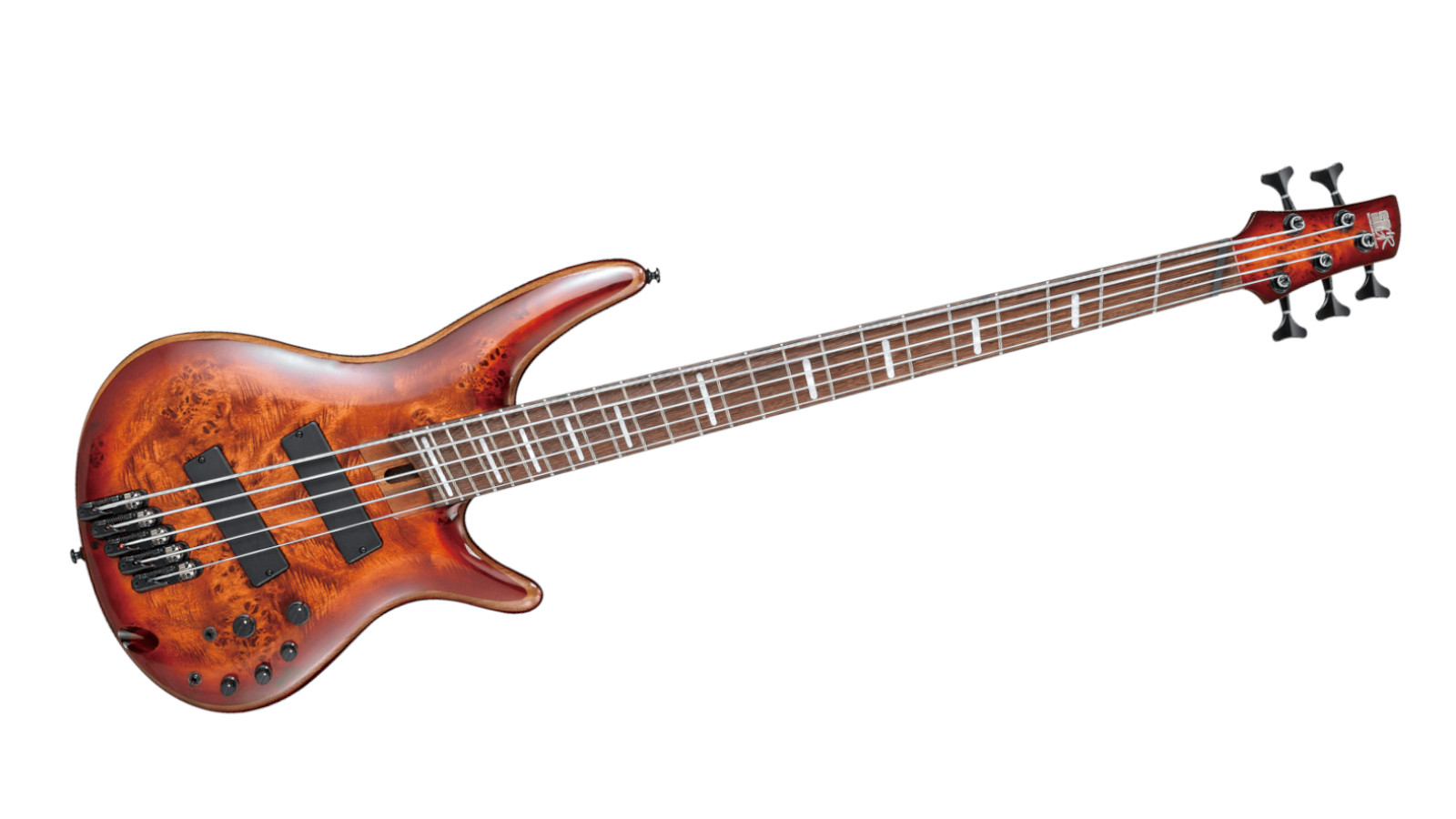
7. Ibanez SRMS805
Our expert review:
Specifications
Reasons to buy
Reasons to avoid
✅ Buy if you want the ultimate 5-string bass guitar: With its forward-thinking design and multi-scale neck, this futuristic 5-string is perfect for the modern player.
❌ Avoid if you prefer your designs more traditional: Those looking for a vintage-inspired bass should steer clear of this particular instrument.
Bass guitars have been the same design for well over half a century but that’s all changed in the past few years. The Ibanez SRMS805 features a multi-scale neck, designed to provide a comfortable playing platform for the modern bassist.
A pair of Bartolini BH2 pickups are angled to enhance the clarity, particularly useful when you have a low B string in the mix. They sound amiable in passive mode, but once you engage in active mode there’s some serious heft and grunt available.
The multi-scale neck design means that you keep the scale length long for the lower strings, ensuring a low action, whilst the higher strings are snappy thanks to the shorter scale length on that side. It’s a marvel of modern bass guitar design, and it plays incredibly well.
Spec comparison
If you're struggling to decide between my top picks, here's all the key specs laid out in table form. If you want to compare them against one another then this is the place to do it without having to jump up and down the page.
Model | Body | Neck | Fingerboard | Scale | Frets | Pickups |
|---|---|---|---|---|---|---|
Fender Vintera II 50s P-Bass | Alder | Maple | Maple | 34” | 20 | P |
Sire Marcus Miller V3P | Mahogany | Maple | Rosewood | 34” | 24 | SS |
SBMM SUB Ray 4 | Basswood | Maple | Maple/Jatoba | 34” | 21 | H |
Yamaha BB735A | Alder/Maple | Maple/Mahogany | Rosewood | 34” | 21 | PJ |
Epiphone Thunderbird 60s | Mahogany | Mahogany/Walnut | Indian Laurel | 34” | 20 | HH |
Hofner Ignition SE Violin | Maple/Spruce | Maple | Jatoba | 30" | 22 | HH |
Ibanez SRMS805 | Okoume/Poplar | Jatoba/Walnut | Panga Panga | 35.5-34” | 24 | HH |
Also consider
For me, the above choices should have the vast majority of bassists covered. There are a lot of great options out there though so if you didn't find what you were looking for, here are some more basses to look at.
Squier Classic Vibe 60s Jazz Bass
Poplar body | Maple neck | Indian Laurel fingerboard | 34" scale | 21 frets | SS pickups
A favorite of John Paul Jones and Geddy Lee, the Jazz Bass delivers a bright and trebly tone with a generous helping of mid-range roar. It makes your basslines sound rich and responsive, and the two pickups offer a great variety of sounds for you to choose from, thanks to individual volume controls.
★★★★½
G&L Tribute L-2000
Poplar/Ash body | Maple neck | Maple/Rosewood fingerboard | 34” scale | 21 frets | HH pickups
Not one for living off former glories, the L-2000 features a much higher output tone, very different from the famous J- and P-Bass sounds. It’s girthy yet precise, and when combined with the TriTone preamp, you get a huge array of sounds with series and parallel options alongside a two-band EQ.
★★★★½
Rickenbacker 4003S
Maple body | Maple neck | Rosewood fingerboard | 33.25" scale | 20-frets | SS pickups
There being two pickups, and a volume and tone knob for each, you can easily craft a plethora of tones. From mellow, warm and wooly to bright and rumbly, it’s all there. The Rickenbacker 4003S can really cut through a mix too, so if you need to be heard in a live or studio mix, then you’re well-equipped to do so. The build quality, sound and feel is worthy of the price tag that the bass wears – it’s a pro instrument in all senses.
★★★★½
Yamaha TRBX 304
Mahogany body | Mahogany/Maple neck | Rosewood fingerboard | 34" scale | 24 frets | HH pickups
The tone offered by this bass is super-clean and clear with plenty of projection. The onboard EQ features five presets that cover slap, pick, flat, fingerstyle, and solo. This is a great addition for beginners and veterans alike, offering instant tone recall for various styles.
★★★★☆
Ibanez Talman TMB100
Poplar body | Maple neck | Jatoba fingerboard | 34" scale | 20 frets | PJ pickups
The Talman is incredibly loud, with a versatile mixture of a split-coil in the middle position and a J-Bass type pickup in the bridge. This classic combo combines beautifully with the stacked controls where one controls volume and balance between the pickups, whilst the other does your EQ sculpting with bass and treble.
★★★★☆
How to choose
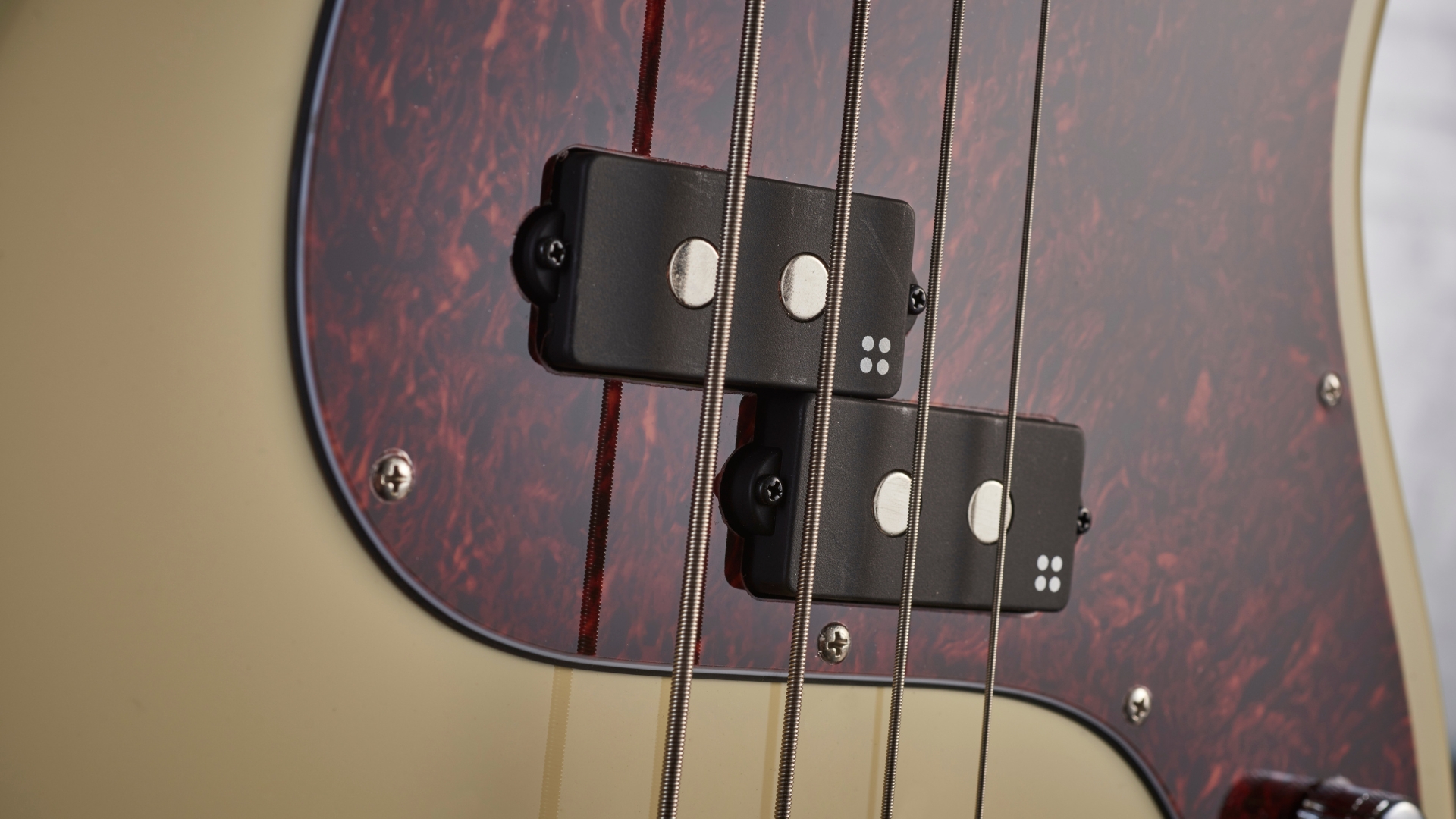
If you’re looking for your first bass, or if you are pining for an upgrade, but want to make sure that your money is going towards the right guitar, I’ve put together a quick overview of the things I think are absolutely paramount to consider when picking out your perfect bass.
1. Genre
You can trust Guitar Player.
While the majority of bass guitars will be versatile enough to give any genre a go, some are more geared up for specific genres than others – if you’re a metalhead, maybe a Hofner Violin bass isn’t going to fit the bill. If, like myself, you play lots of different styles of music, then picking a bass that does it all to a high level is my recommendation. This doesn’t mean you have to spend a fortune – a Squier jazz bass did everything I needed from grunge to funk.
2. Image
Let’s not beat around the bush, a big part of buying any type of guitar is how it looks. Bass guitars can be spectacular works of art and, in my humble opinion, the bassist has license to go for as outrageous a look as they like, given we hold everything together in a band setting.
If you like a particular style of bass but the finishes aren’t so inspiring, it’s definitely worth checking multiple retailers as there may be exclusive colorways or a slightly different model that has a little more eccentricity in the looks department. Does it have any sizable impact on the tone? No. Is it still important? 100%.
3. Use case
Between home practice, recording, or live, not every bass is ideal for every application. I’m not in a position to tell you not to buy a Fender Custom Shop bass and take it to the sleaziest dive bar venue around, but just bear in mind that other people may not be as careful with it as you are, and, unfortunately, instrument thefts are becoming more and more common.
If you’re a regular gigging musician, who doesn’t have access to roadies and a secure tour bus, I’d look at getting a sturdy workhorse bass that will never let you down but if the worst happens, won’t leave you totally distraught. A high-end bass would be ideal for studio use, however, ensuring you get the best recordings possible.
FAQs
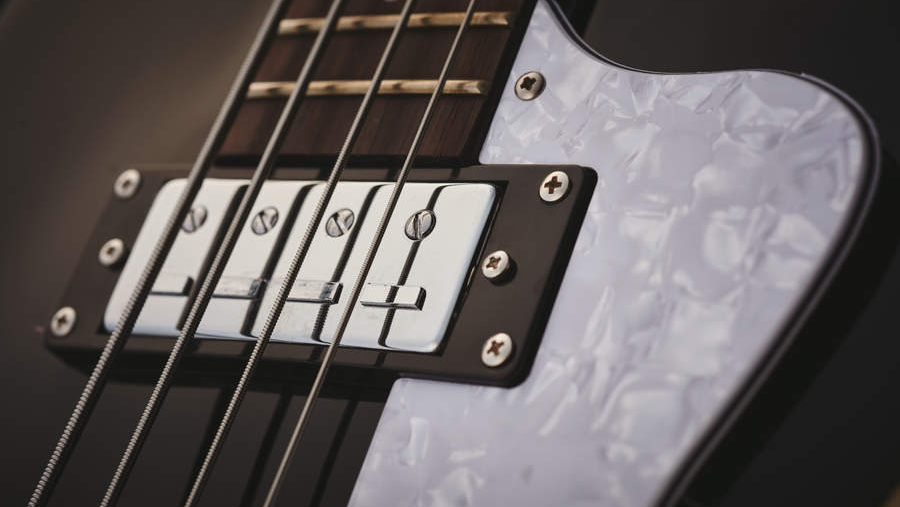
How do bass guitars work?
Bass guitars (generally) have longer necks and therefore longer strings, which are also thicker. On a standard four-string bass, it will be tuned an octave down from the four lowest strings of a guitar. Other than this, they function in a very similar way to electric guitars, with pickups that produce an electrical signal that is transmitted through a jack cable to an amplifier to produce sound.
What are the best bass guitar brands?
Historically, as with most things guitar-related, Fender is the king of bass guitar, bringing some of the first and best mass-manufactured basses to the market. Their recipe hasn’t changed much over the years, and they remain fantastic, including their basses in the range of their Squier sub-brand.
There are also stalwarts such as MusicMan, which are known for their quality and offer something a little different at the premium end of the market, while newer brands such as Sire have changed the game when it comes to craftsmanship at a lower price point. You can also look at Japanese brands like Ibanez and Yamaha which make some fantastic bass guitars.
Is bass easier than guitar?
The short answer is no. Playing bass requires a unique skillset from guitar, and specific styles such as slap and finger playing require years of practice to master in the same way that shredding does with electric guitar. In its simplest form, if you are only playing root notes with a pick, you could make the argument that it can be simpler, but this would be wildly undermining what it is to play bass.
Is bass guitar good for beginners?
Some people would recommend playing guitar first and then moving onto bass – that’s what I did. This is a good way to get the fundamentals of coordination between your hands, which are performing different jobs. Guitar strings are thinner, so may be easier for younger, smaller hands to learn on too.
There will be bass-specific techniques (slapping, popping, fingerstyle) that you likely won’t learn on guitar, however, so it may not be as seamless a transition as you think, and if you are set on becoming the world’s best bassist, we’d say it’s worthwhile starting on bass and getting some of those techniques down early.
Why do bass players not use a pick?
Firstly, it is worth saying you absolutely can play bass with a pick – I do. While some pros may turn their noses up, many of the best punk players would say pick is the only way to go. Finger playing allows the player additional freedom to play quickly, particularly when it comes to complex rhythms. Picks can produce a snappier, brighter attack, whereas finger playing is generally warmer and rounder, which is ideal for genres such as jazz.
Key terms

If you're confused about any of the lingo presented here in this guide, this glossary of key terms will help you understand more about the terminology related to the bass guitar.
- Active pickups: Pickups powered by an external power source – usually a 9V battery – that produces a higher output signal.
- Bass amp: A device used to amplify the electric signal produced by a bass guitar.
- Bridge: Sitting at the bottom of your bass, the bridge is a section of the instrument that the strings are strung through to provide tension.
- Control knobs: Knobs mounted to the front of your bass which allows you to change parameters of its sound, such as volume, tone, or to blend pickups.
- EQ: An EQ allows you to alter the frequency spectrum of your bass by making specific frequencies louder or quieter.
- Fingerboard (Fretboard): The thin piece of wood that sits on the top of your bass’s neck on the front of the guitar.
- Frets: Frets are the thin metal strips between which you place your fingers to produce different notes.
- Fretless bass: A bass without physical metal frets, allowing for smooth sliding from top to bottom of the neck.
- Headstock: The headstock sits at the top of the neck and is where your strings are connected to your tuning pegs.
- Humbucker: A pickup made of two single coils together, which means it doesn’t produce hum. Also produces a higher output than a single-coil.
- Jazz bass: One of Leo Fender's original designs, initially for jazz players, but one which has become a template for lots of other bass guitar designs.
- Neck profile: The shape of the bass's neck viewed through a cross-section. Typically named after a letter that reflects the shape, like 'C'.
- Nut: A piece of material that sits between the top of the neck and the headstock. Helps the strings run correctly by providing small grooves for them to sit in.
- P-Bass (Precision Bass): The most popular bass guitar ever made, the P-Bass is one of Leo Fender's original designs and is now often imitated even today.
- Passive pickups: Pickups that do not require an additional power source.
- Scale length: The length between the nut and the bridge of the bass.
- Short scale: A bass with a shorter distance between the nut and the bridge, which can make it more comfortable to play but affects the tone.
- String spacing: The spaces between the strings, typically used to determine the size of pickup that should be installed.
- Tuning pegs (machine heads): Mounted to the headstock, when twisted, tuning pegs will change the pitch of the corresponding string up or down, depending on the direction it is turned.
How we test
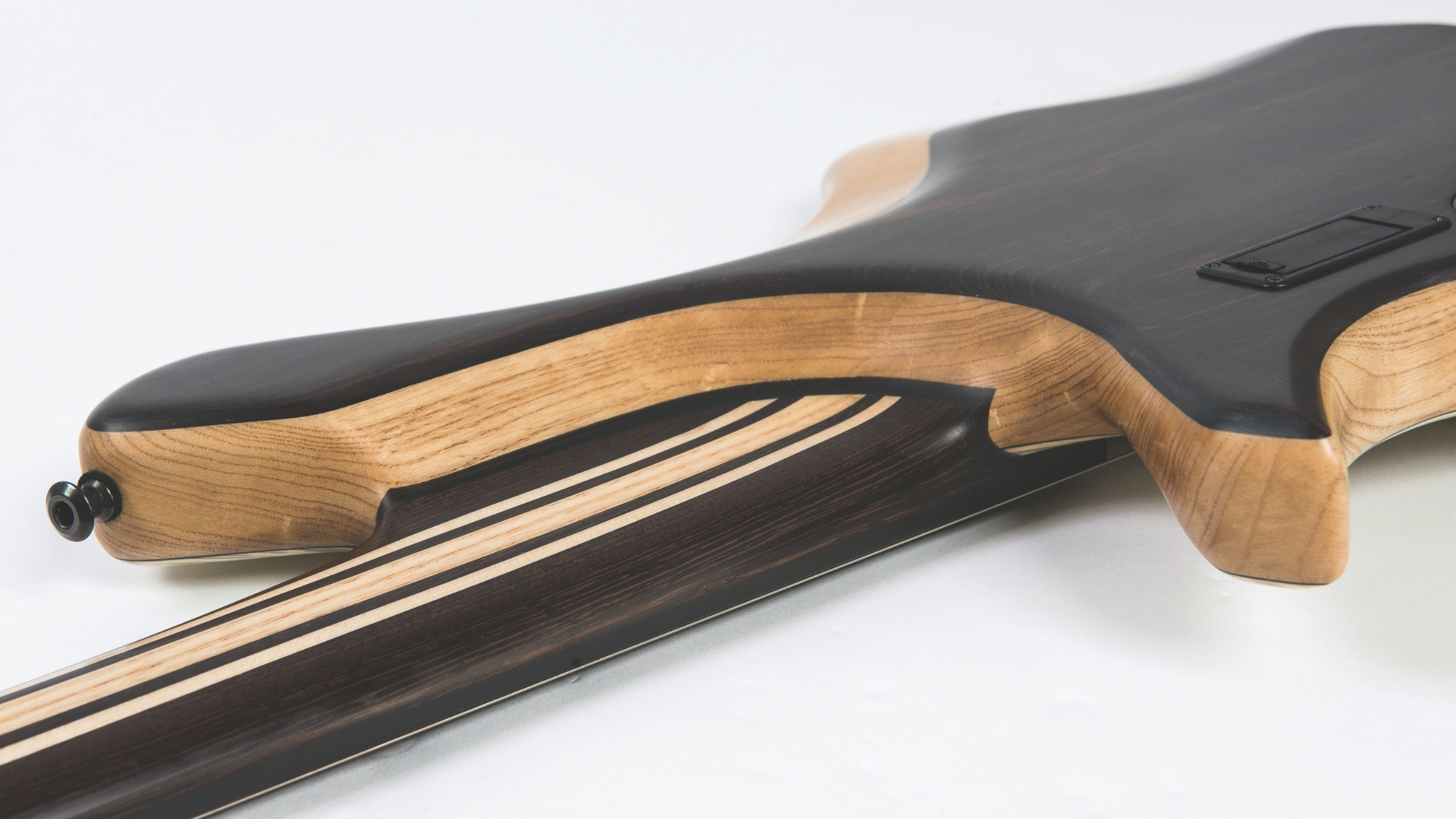
Here at Guitar Player we've been testing bass guitars for nearly 60 years. Safe to say, we know what we're talking about when it comes to handling the low end. Our team of writers are all musicians who live and breathe music, and when testing we ensure we have a robust testing process to subject every instrument to the same tests.
First up, we'll look at the overall build quality of the instrument. Checking things like movement in the neck pocket, the fingerboard edges for sharp frets, as well as the overall finish, we're looking to see how well it's been put together, as this is often a good indicator of how good quality the instrument is overall.
Next we'll start playing the instrument to see how it feels out of the box. Does it need extra setting up or is it good to go? How does it handle fingerstyle versus using a pick? We'll try techniques like slapping and tapping, all with an eye on how it reacts in each situation.
Our final test is the sound and here we'll perform multiple tests. It might be we're plugging it direct into an audio interface to see how the direct recorded sound is. Or we'll take it to band practice or a gig and crank it through our bass guitar amps to see just how thundering those lows really are. We'll try a variety of amplifiers and pedals in different combinations to really get a good feel for how it sounds, playing different styles and genres to see how it reacts.
Read more about how we test products at Guitar Player.
Related buyer's guides
- Match your new guitar with one of the best bass amps
- On a budget? Here's our list of the best bass guitars under $500
- Plug in with one of the best guitar cables
All the latest guitar news, interviews, lessons, reviews, deals and more, direct to your inbox!
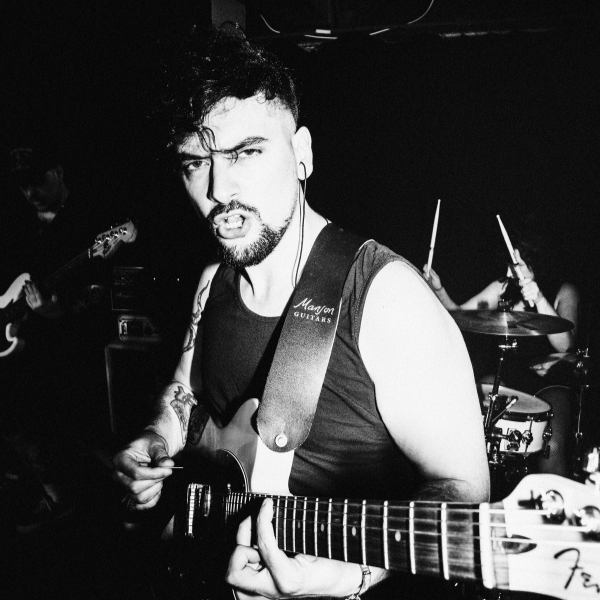
Matt is a Junior Deals Writer here at Guitar Player. He regularly tests and reviews music gear with a focus on guitars, amps, pedals, modelers, and pretty much anything else guitar-related. Matt worked in music retail for 5 years at Dawsons Music and Northwest Guitars and has written for many music sites including MusicRadar, Guitar World, Guitar.com, Ultimate Guitar, and Thomann’s t.blog. A regularly gigging guitarist with over 20 years of experience playing live, writing, and recording in bands, he's performed everything from jazz to djent, gigging all over the UK in more dingy venues than you can shake a drop-tuned guitar at.
